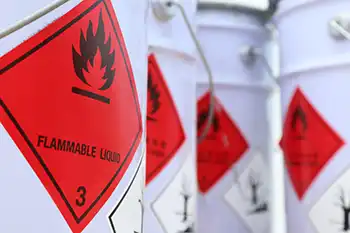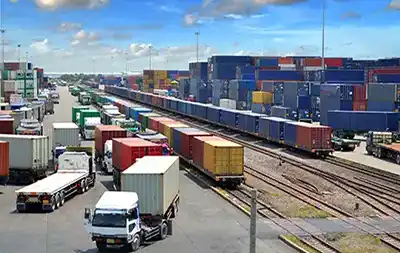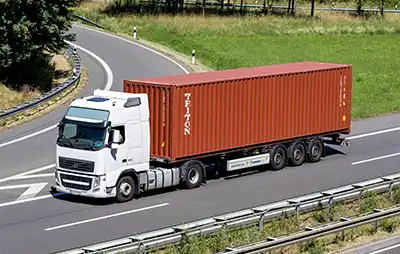
Hazardous Material (HAZMAT) Drayage in Dallas, Texas
In the world of logistics and transportation, the handling and shipping of hazardous materials, often referred to as HAZMAT, require a level of expertise and precision that goes beyond standard freight or intermodal drayage services. Hazardous cargo demands specialized knowledge and equipment to ensure safe and efficient transportation.
How do you transport hazardous materials in the United States?
Transporting hazardous materials in the United States involves strict adherence to safety regulations set forth by the U.S. Department of Transportation (DOT) and other relevant authorities. This includes obtaining the necessary permits and endorsements, proper labeling and packaging, documentation, vehicle inspection, and more. Hazardous material shipping is a highly regulated and safety-critical activity. Non-compliance with regulations can result in severe consequences, including fines, penalties, and risks to public safety.
Does A HAZMAT Driver Need A Hazardous Materials Endorsement (HME)?
A Hazardous Materials Endorsement (HME) is a designation added to a commercial driver’s license (CDL) that allows the holder to transport hazardous materials (HAZMAT) in commercial vehicles legally. This endorsement is required by the U.S. Department of Transportation (DOT) and is essential for individuals who transport hazardous materials as part of their job.
Evans Delivery Dallas drivers transporting hazardous materials have an HME on their CDL that involves a background check, a knowledge test, and ongoing safety and security regulations compliance.
What are the 9 USDOT HAZMAT Classifications?
Hazardous materials are classified by the United States Department of Transportation (USDOT) based on the chemical and physical properties of the specific product. The nine HAZMAT classifications by the USDOT are:

- Class 1: Explosives
- Class 2: Gases
- Class 3: Flammable and Combustible Liquids
- Class 4: Flammable Solids
- Class 5: Oxidizing Substances, Organic Peroxides
- Class 6: Toxic and Infectious Substances
- Class 7: Radioactive Materials
- Class 8: Corrosives
- Class 9: Miscellaneous Hazardous Materials

Request A Quote
How does USDOT define Hazardous Material Classifications?
The United States Department of Transportation (DOT) classifies hazardous materials (HAZMAT) into various classes and divisions based on their characteristics and potential hazards. These classifications are defined in the DOT’s Hazardous Materials Regulations (HMR) and are crucial for the safe handling, packaging, labeling, and transportation of these materials. Here are the hazardous material classifications by the DOT:
Class 1: Explosives:
HAZMAT Class 1, Explosives, includes materials with varying degrees of explosiveness. Divisions range from mass explosion hazards (Division 1.1) to less sensitive explosives (Division 1.6). These materials can pose extreme dangers and require precise handling, storage, and transportation to prevent accidents and protect public safety.
Class 2: Gases:
HAZMAT Class 2, Gases, encompasses flammable gases (Division 2.1), non-flammable, non-toxic gases (Division 2.2), and toxic gases (Division 2.3). Flammable gases like propane fall under Division 2.1, while gases like nitrogen (Division 2.2) and ammonia (Division 2.3) are transported with specific safety precautions based on their properties.

Class 3: Flammable Liquids:
HAZMAT Class 3, Flammable Liquids, includes liquids with a flashpoint of 141°F (60.5°C) or less. Examples are gasoline, ethanol, and paint thinner. These materials pose fire hazards and require special handling and containment during transportation to prevent accidents and spills.
Class 4: Flammable Solids:
HAZMAT Class 4, Flammable Solids, includes materials that can ignite easily. This class is divided into Division 4.1 (solids that self-combust), Division 4.2 (spontaneously combustible materials), and Division 4.3 (materials emitting flammable gases in contact with water). Examples range from magnesium (4.1) to certain reactive metals (4.3).
Class 5: Oxidizers and Organic Peroxides:
HAZMAT Class 5 Oxidizers and Organic Peroxides comprise substances that promote combustion. Division 5.1 includes oxidizers that support combustion, while Division 5.2 includes organic peroxides that can release oxygen and cause combustion. These materials are used in various applications and require special handling to prevent fires.
Class 6: Toxic and Infectious Substances:
HAZMAT Class 6, Toxic and Infectious Substances, encompasses Division 6.1 (toxic substances harmful to humans or animals) and Division 6.2 (infectious materials, including biological agents). These materials pose health risks and require strict containment and safety measures during transportation to protect handlers and the environment.
 Class 7: Radioactive Materials:
Class 7: Radioactive Materials:
HAZMAT Class 7, Radioactive Materials, includes substances emitting ionizing radiation. These materials are used in medical, industrial, and research applications. They require specialized packaging, labeling, and handling to prevent radiation exposure.
Class 8: Corrosives
HAZMAT Class 8 Corrosives consist of substances that can cause severe damage to living tissue and other materials on contact. Examples include sulfuric acid and sodium hydroxide. Special precautions are essential to prevent leaks, spills, and exposure during transportation.
Class 9: Miscellaneous Hazardous Materials
HAZMAT Class 9, Miscellaneous Hazardous Materials, encompasses substances that don’t fit other classifications but still pose risks. Examples include lithium batteries and dry ice. These materials require proper packaging, labeling, and safety measures for safe transportation.
These classes and divisions categorize hazardous materials based on their properties and potential hazards. Each class and division has specific regulations and requirements for safe transportation, including packaging, labeling, placarding, and handling procedures. Additionally, hazardous materials are further identified by their proper shipping names and identification numbers, which are used to ensure accurate and safe handling during transport. Compliance with these regulations is essential for the safe transportation of hazardous materials in the United States.
How Is Hazardous Material Shipping Defined?
Hazardous material shipping, or HAZMAT shipping, refers to transporting substances that pose a risk to health, safety, property, or the environment due to their inherent properties. These materials encompass a wide range of products, including:
- Chemicals: Chemical transportation includes industrial chemicals, corrosives, and toxic substances used in various industries.
- Flammable Materials: Liquids, gases, or solids that can ignite and sustain a fire fall under this category.
- Explosives: Materials that can explode, such as fireworks, explosives, or ammunition.
- Radioactive Materials: Substances emitting ionizing radiation, often found in medical and industrial applications.
- Biological Substances: Infectious agents, pathogens, and biological samples that require specialized handling.
- Compressed Gases: Gases stored under pressure, like propane or compressed air.
What Are The Benefits Of HAZMAT Shipping By Evans Delivery Dallas?
1. Compliance with Regulations
HAZMAT shipping regulations are stringent and vary by region and substance. Being well-versed in these regulations ensures that all shipments comply with legal requirements. Our knowledge helps our clients avoid fines and legal issues.
2. Specialized Equipment
HAZMAT handling procedures often require specialized containers, packaging, and equipment. Evans Delivery Dallas has access to and experience with these tools, ensuring the safe containment and transport of dangerous substances.
 3. Trained Personnel
3. Trained Personnel
Handling hazardous materials demands expertise; therefore, we employ trained professionals who understand the unique risks and safety measures associated with HAZMAT shipments.
4. Safety Protocols
Safety is paramount in HAZMAT shipping; for that reason, we have established safety protocols, including emergency response plans, to mitigate risks and respond effectively to any unforeseen incidents.
5. Environmental Responsibility
HAZMAT transportation can have environmental implications, so it is essential that we prioritize eco-friendly practices and understand the importance of environmental compliance and minimizing the environmental impact of hazardous materials.
6. Insurance Coverage
Evans Delivery Dallas offers specialized insurance coverage for HAZMAT shipments, providing additional peace of mind to our shipping clients.
7. Efficiency and Reliability
As a hazmat transportation company, Evans Delivery Dallas is efficient and reliable as we ensure that hazardous materials reach their destination on time and intact while minimizing disruptions to business operations.
8. Customized Solutions
Every HAZMAT shipment is unique. Our team offers customized solutions tailored to the specific requirements of each HAZMAT container, ensuring that the proper measures are in place for safe transportation.
9. Emergency Response
In the event of an incident or accident during transportation, we partner with expert companies equipped to respond swiftly and effectively, mitigating potential harm and damage.
10. Risk Assessment
Expert HAZMAT carriers conduct thorough risk assessments for each shipment, identifying potential hazards and implementing proactive measures to prevent incidents.
Evans Delivery Dallas specializes in hazardous material shipping and brings a wealth of knowledge, specialized equipment, and an unmatched commitment to safety and compliance. Contact one of our HAZMAT experts regarding your upcoming shipment today.






